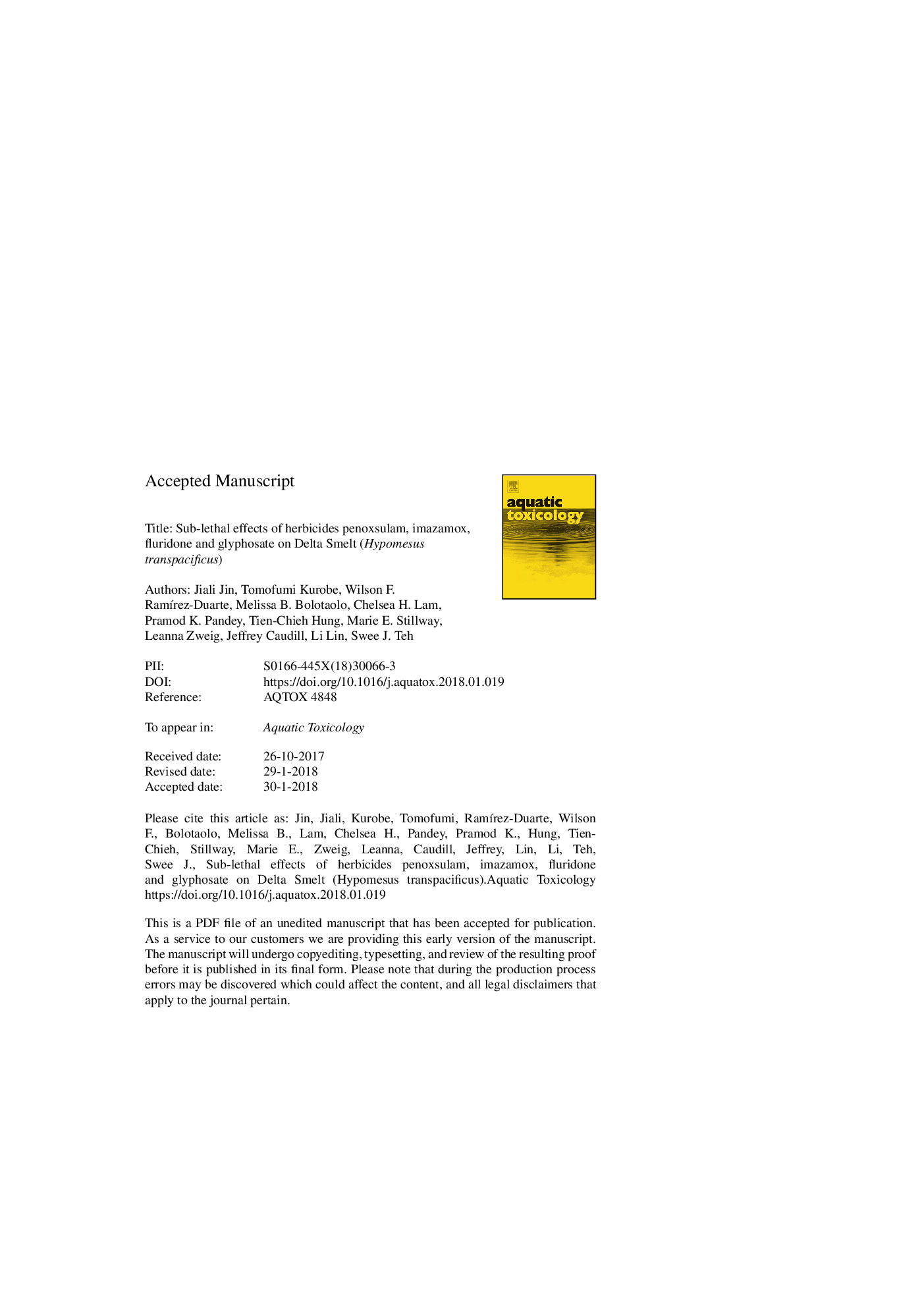| Article ID | Journal | Published Year | Pages | File Type |
|---|---|---|---|---|
| 8883817 | Aquatic Toxicology | 2018 | 21 Pages |
Abstract
Concerns regarding non-target toxicity of new herbicides used to control invasive aquatic weeds in the San Francisco Estuary led us to compare sub-lethal toxicity of four herbicides (penoxsulam, imazamox, fluridone, and glyphosate) on an endangered fish species Delta Smelt (Hypomesus transpacificus). We measured 17β-estradiol (E2) and glutathione (GSH) concentrations in liver, and acetylcholinesterase (AChE) activity in brain of female and male fish after 6â¯h of exposure to each of the four herbicides. Our results indicate that fluridone and glyphosate disrupted the E2 concentration and decreased glutathione concentration in liver, whereas penoxsulam, imazamox, and fluridone inhibited brain AChE activity. E2 concentrations were significantly increased in female and male fish exposed to 0.21â¯Î¼M of fluridone and in male fish exposed to 0.46, 4.2, and 5300â¯Î¼M of glyphosate. GSH concentrations decreased in males exposed to fluridone at 2.8â¯Î¼M and higher, and glyphosate at 4.2â¯Î¼M. AChE activity was significantly inhibited in both sexes exposed to penoxsulam, imazamox, and fluridone, and more pronounced inhibition was observed in females. The present study demonstrates the potential detrimental effects of these commonly used herbicides on Delta Smelt.
Related Topics
Life Sciences
Agricultural and Biological Sciences
Aquatic Science
Authors
Jiali Jin, Tomofumi Kurobe, Wilson F. RamÃrez-Duarte, Melissa B. Bolotaolo, Chelsea H. Lam, Pramod K. Pandey, Tien-Chieh Hung, Marie E. Stillway, Leanna Zweig, Jeffrey Caudill, Li Lin, Swee J. Teh,
